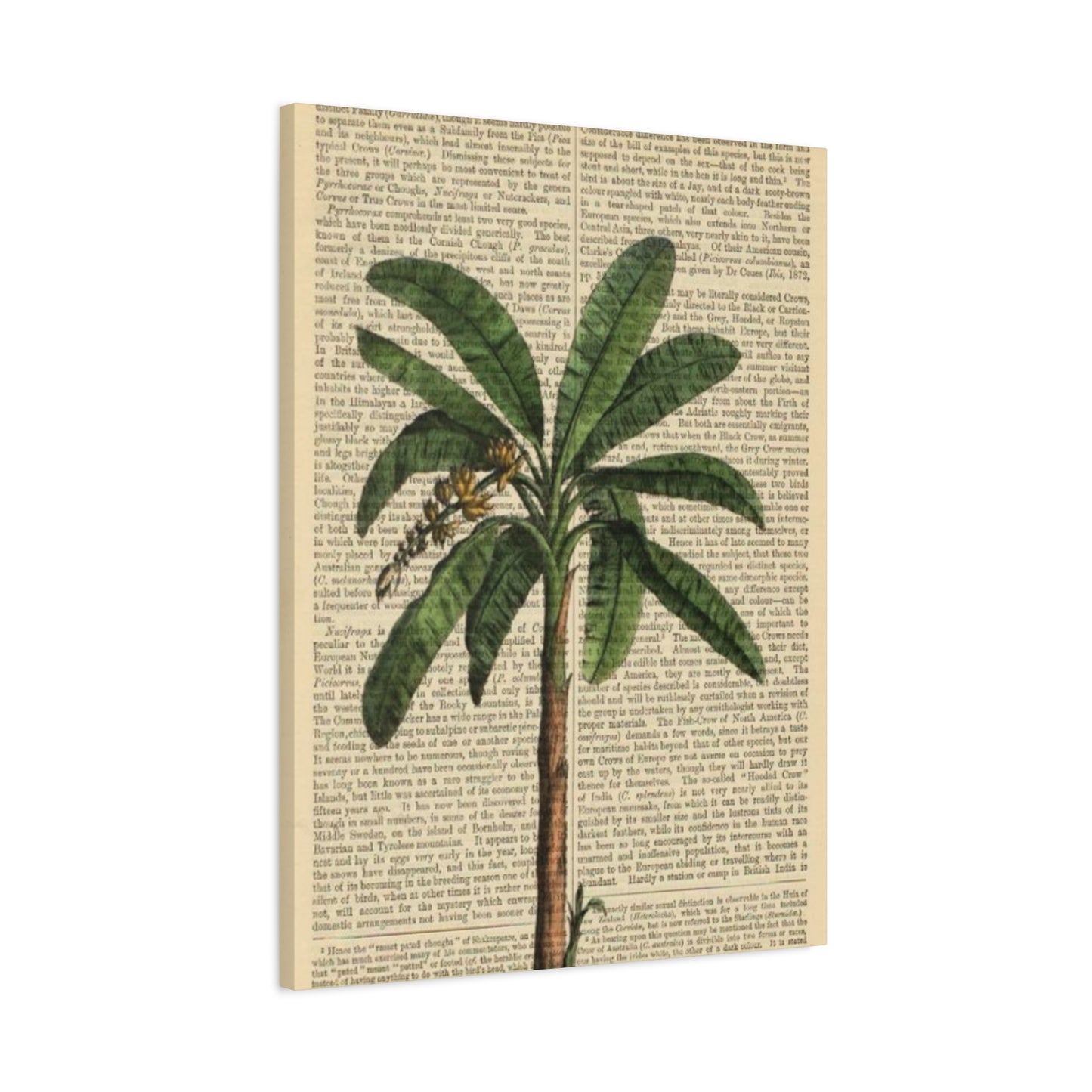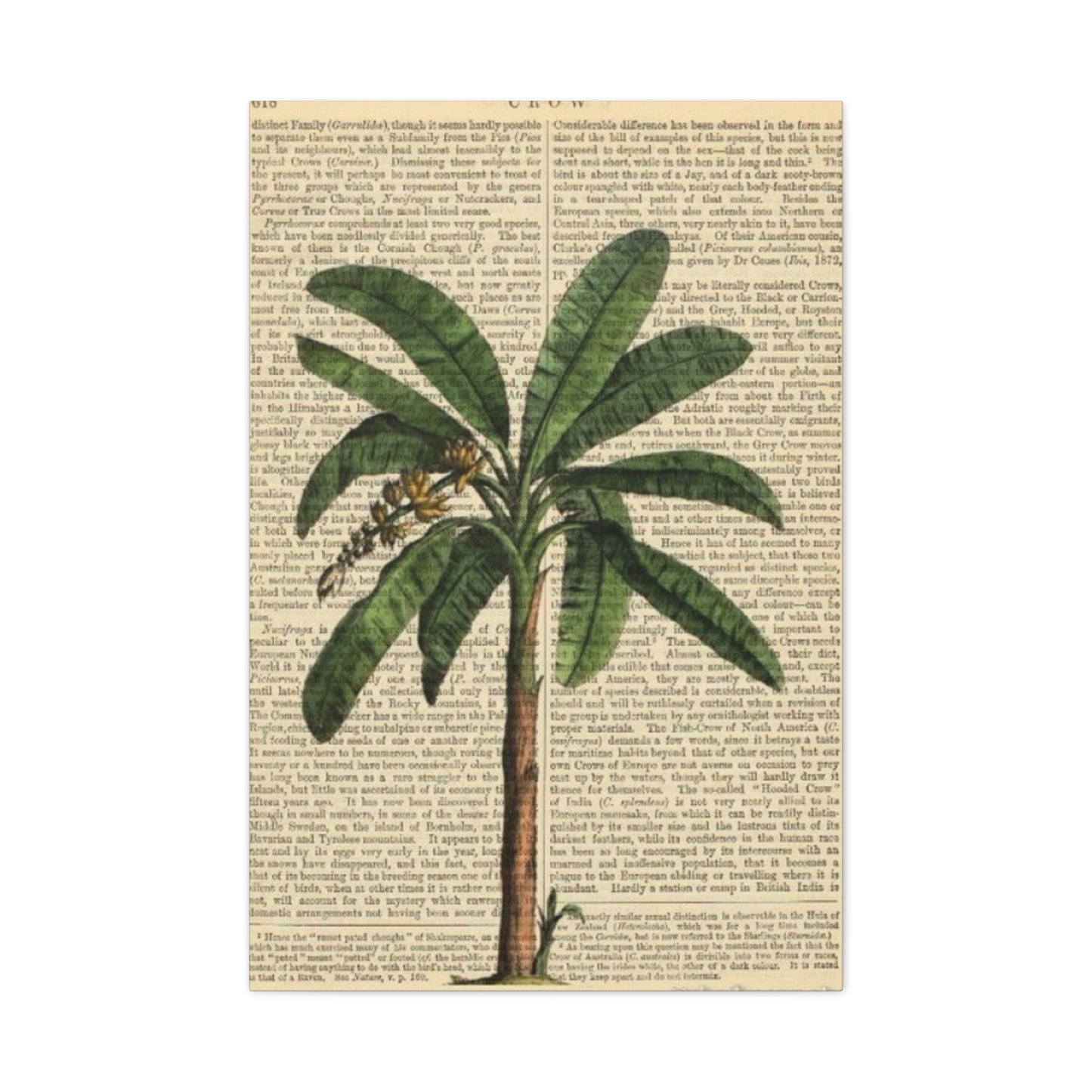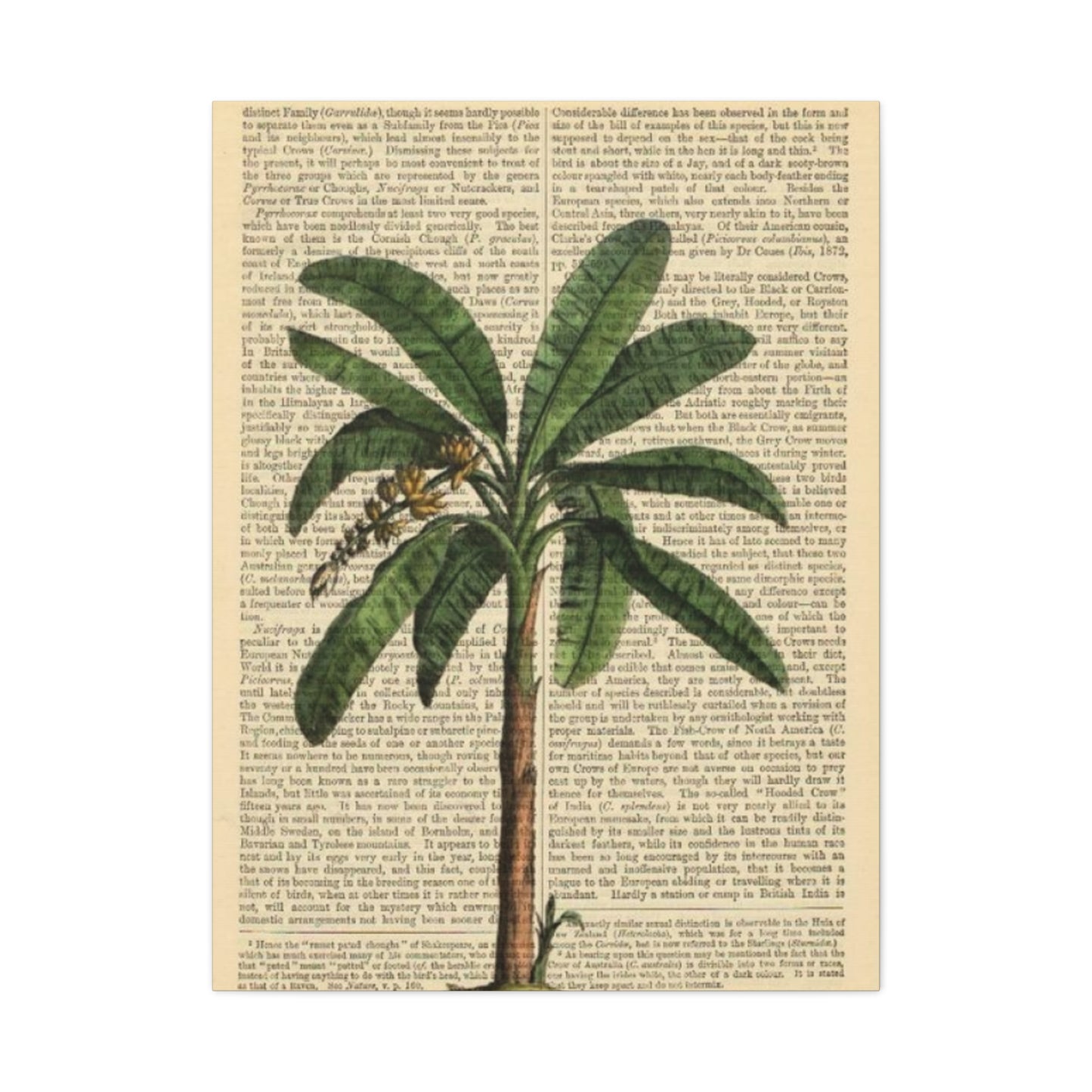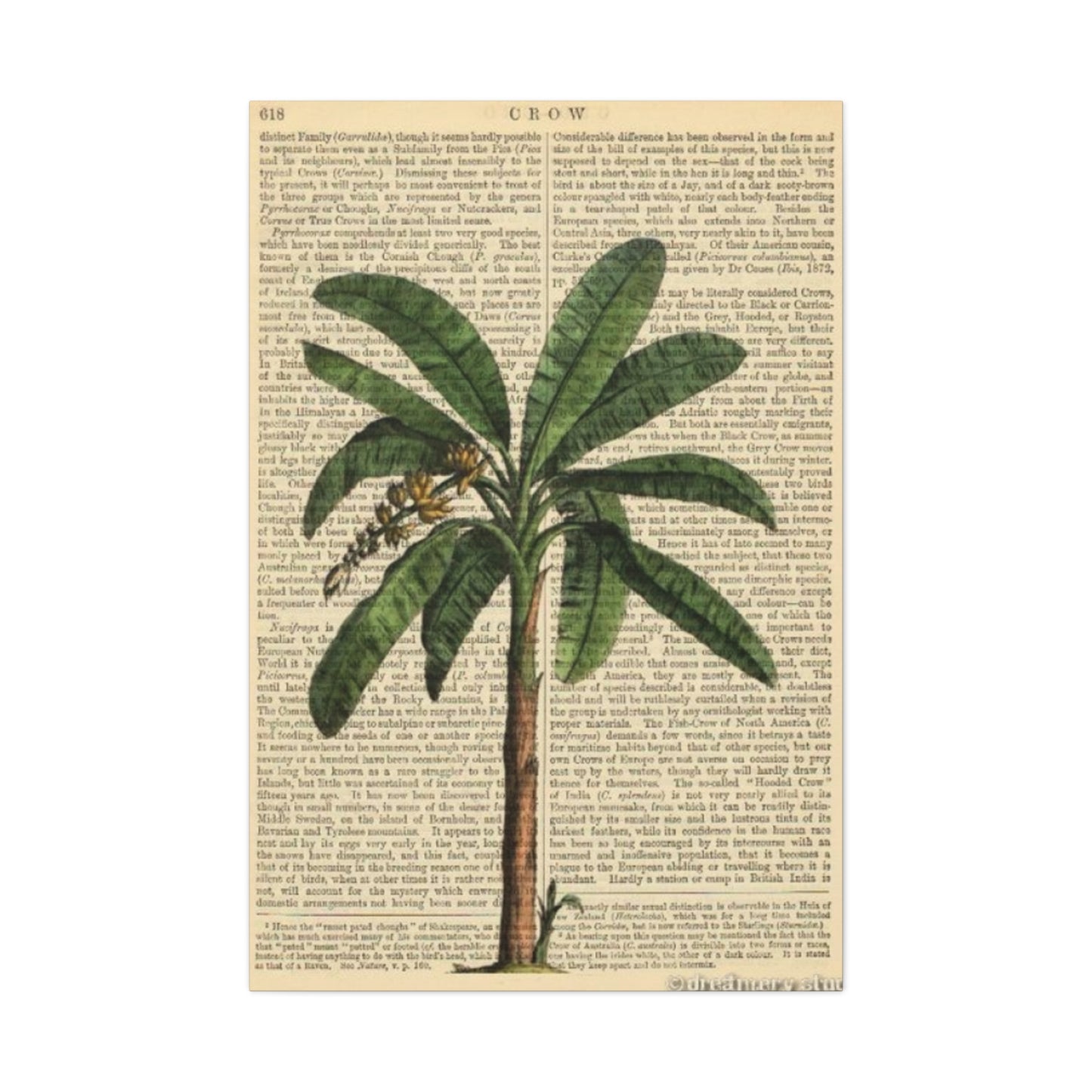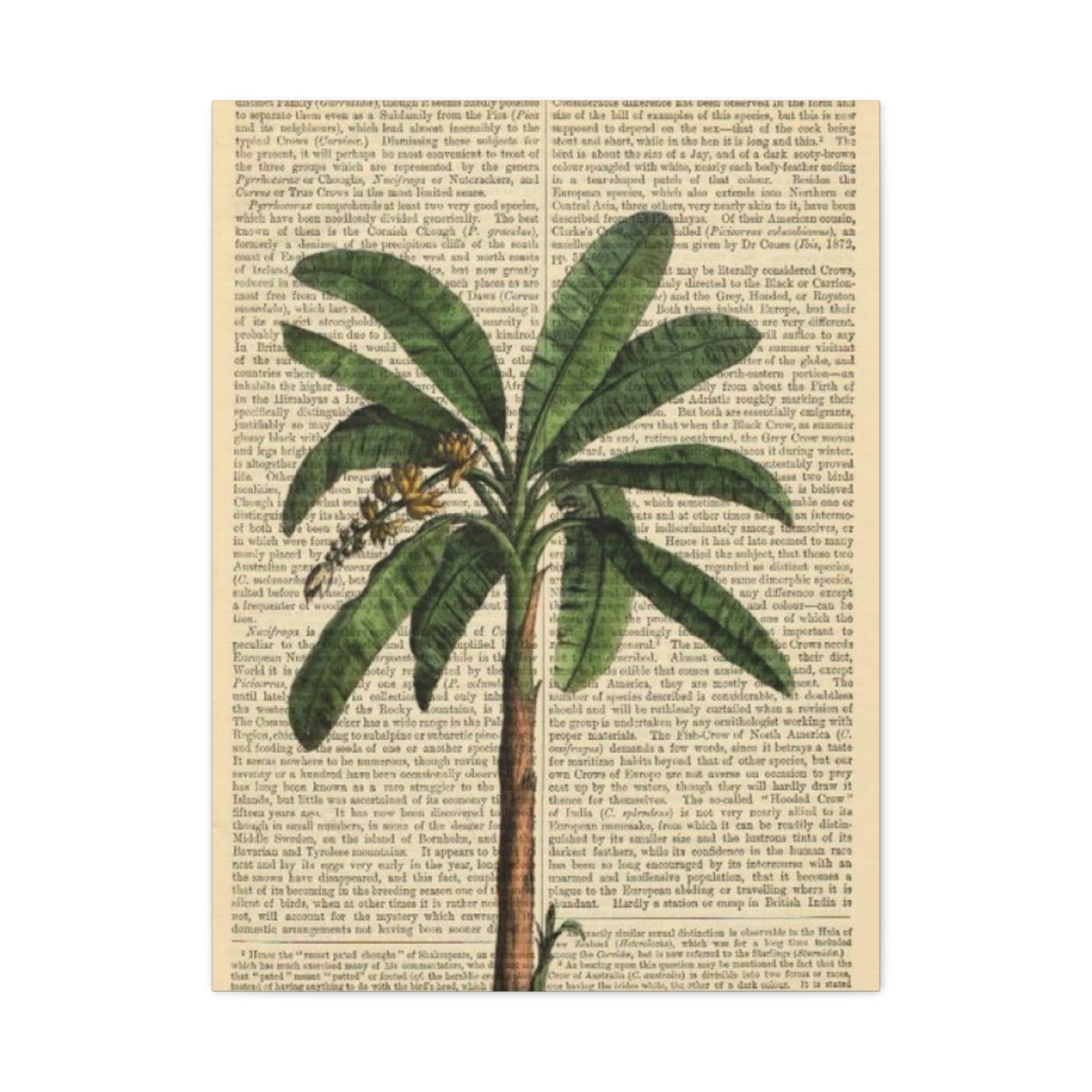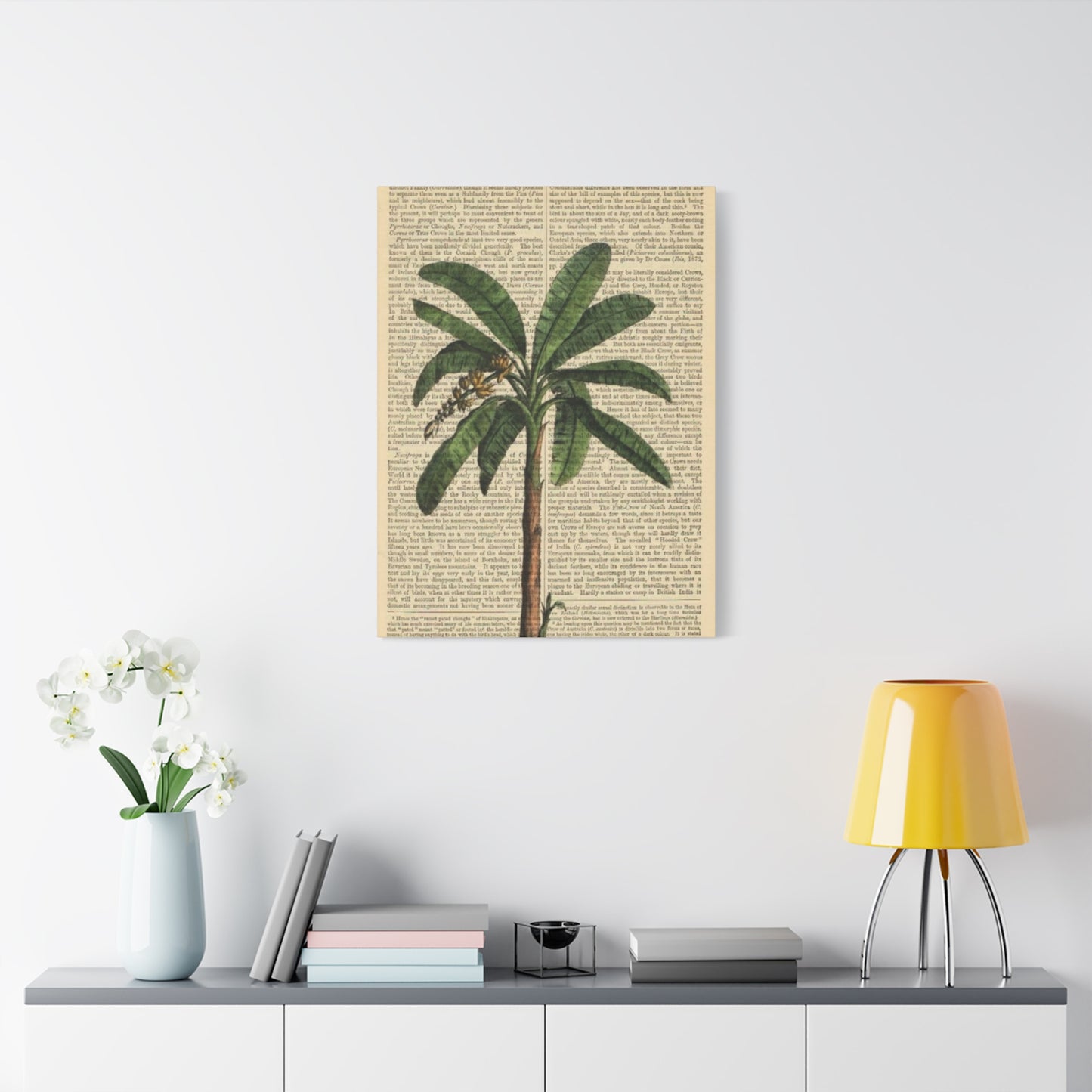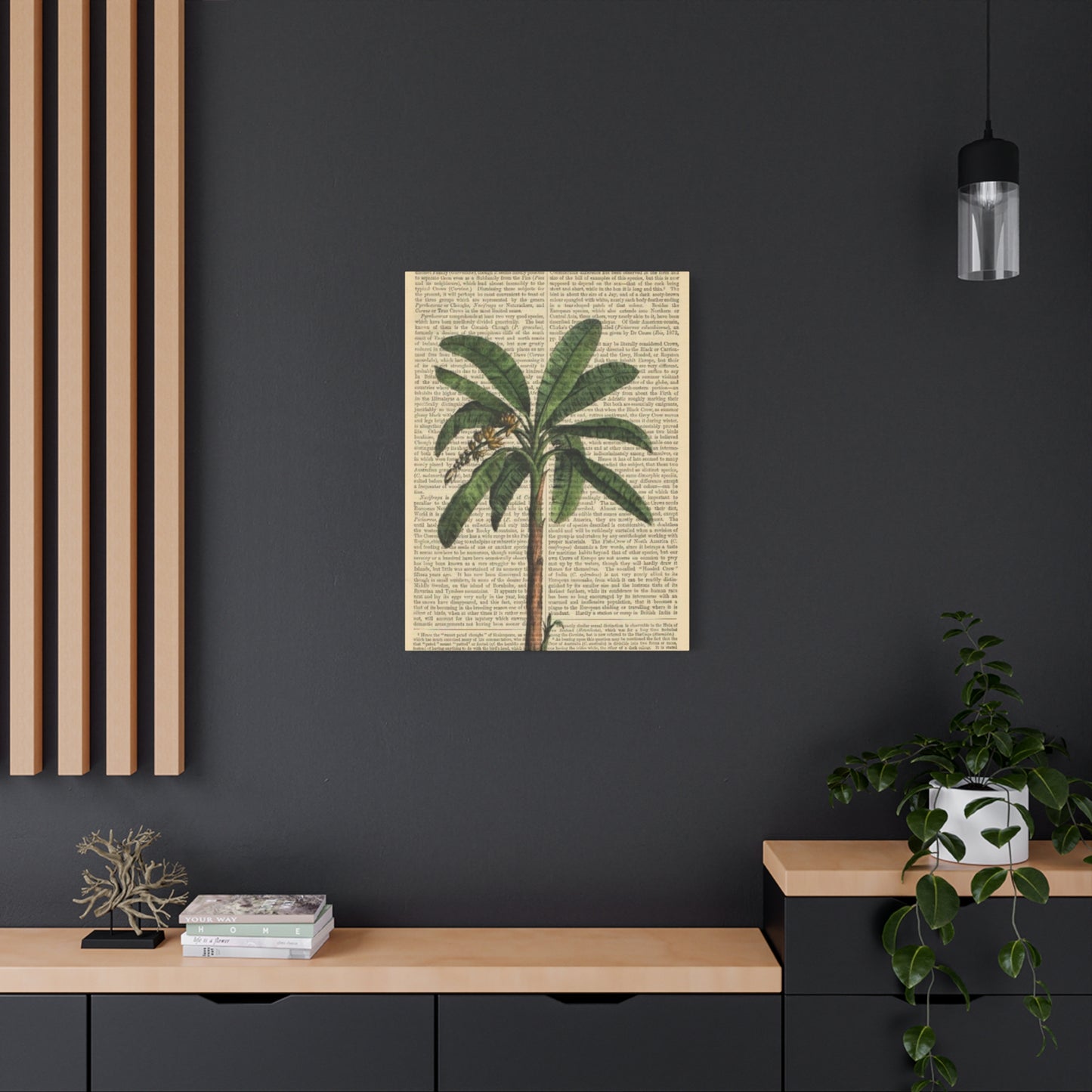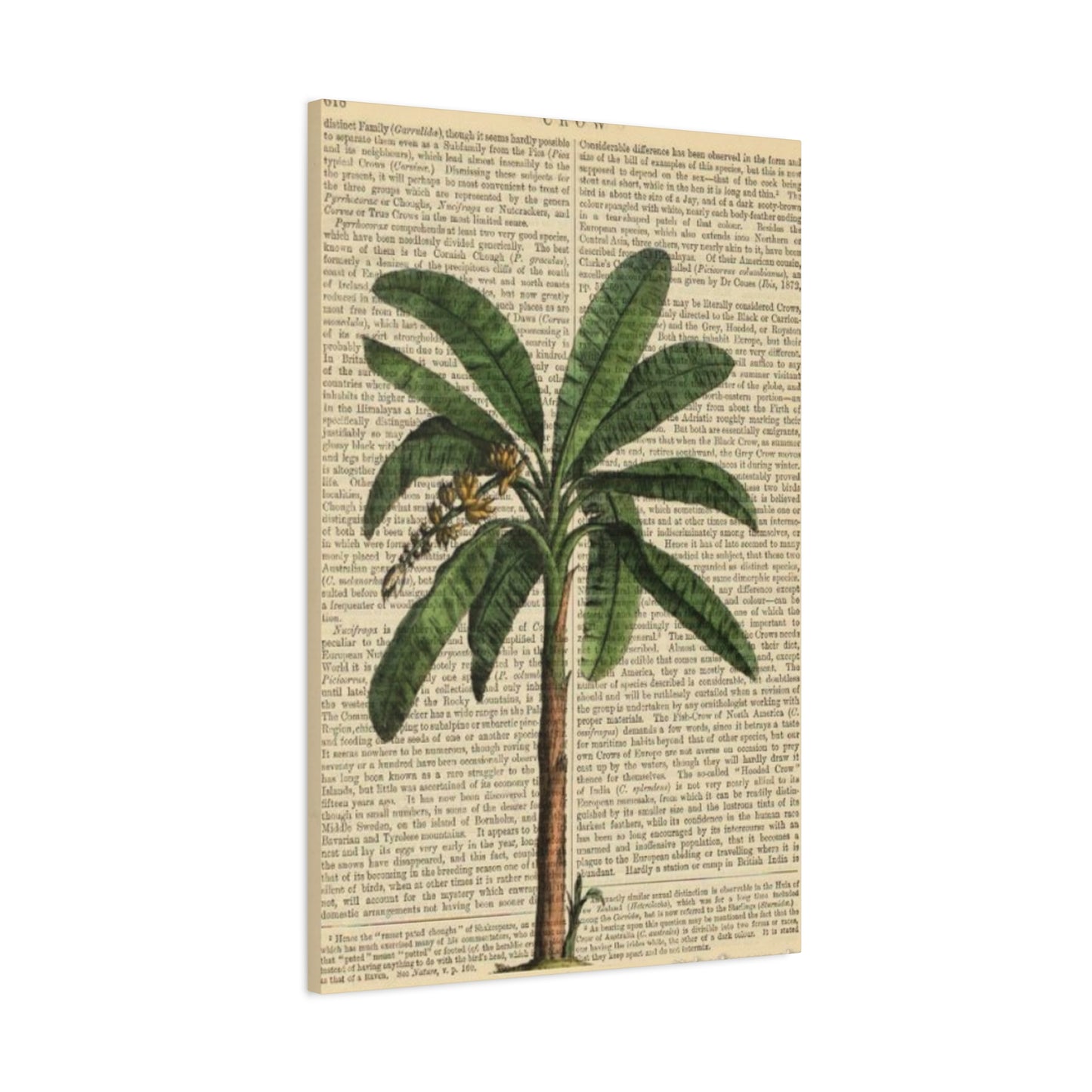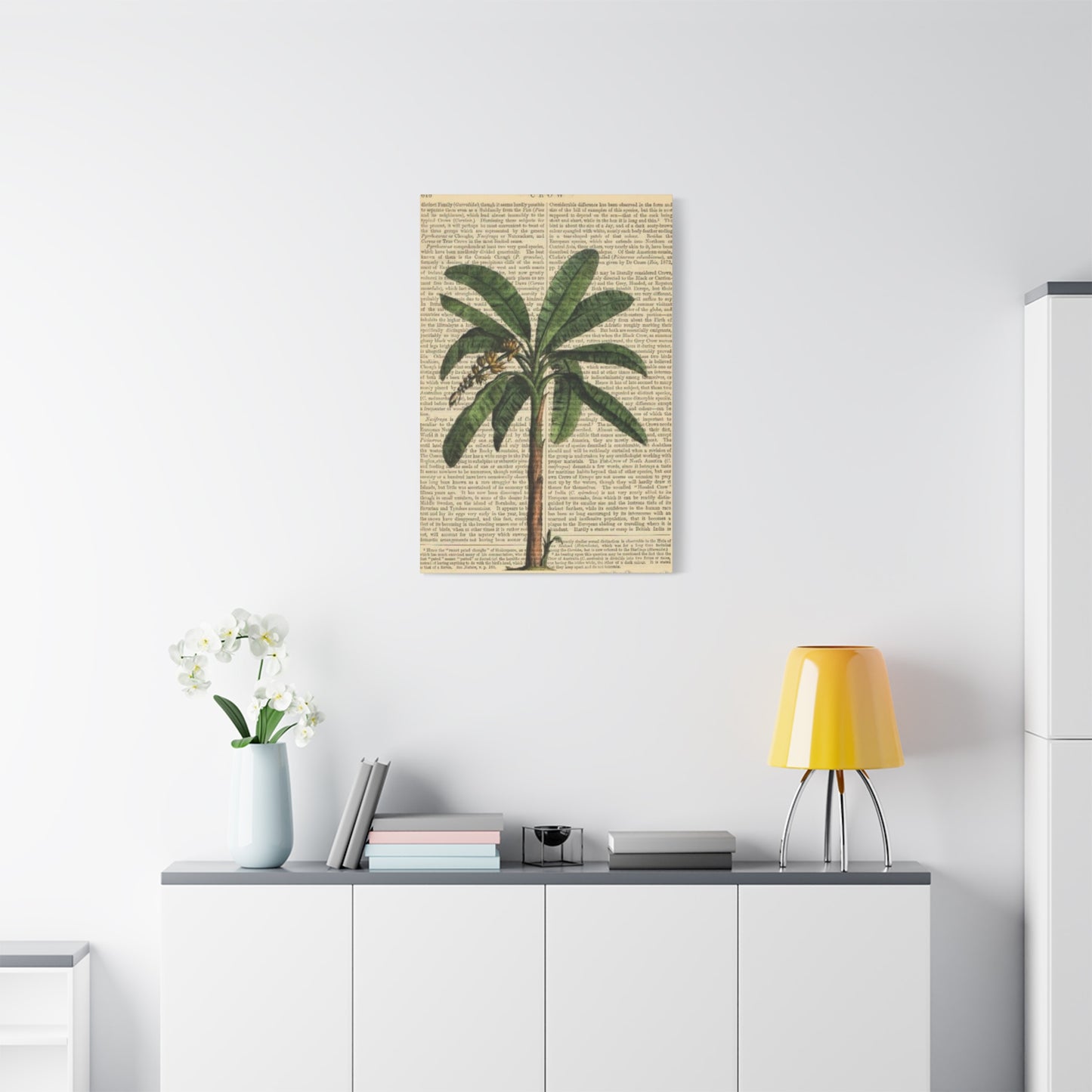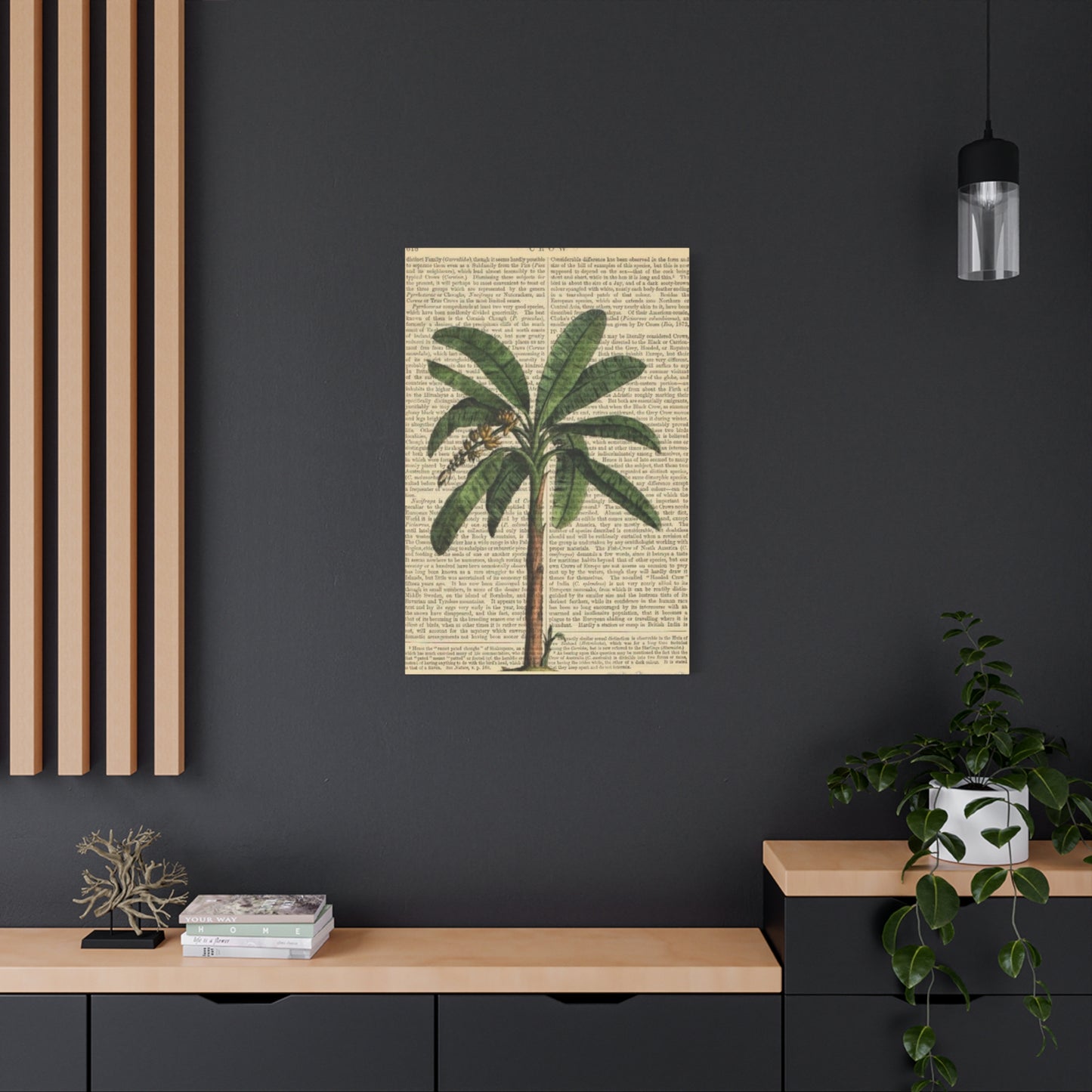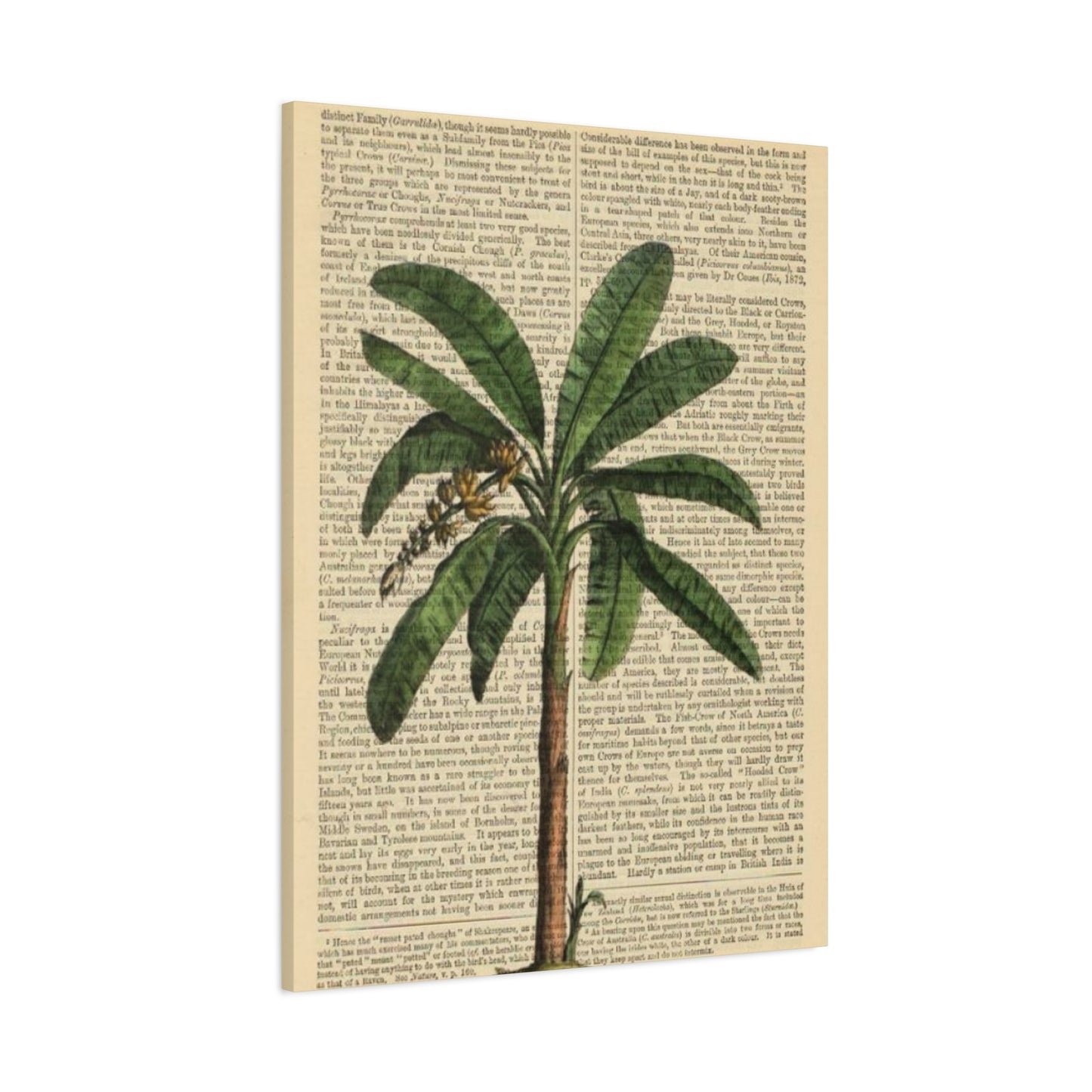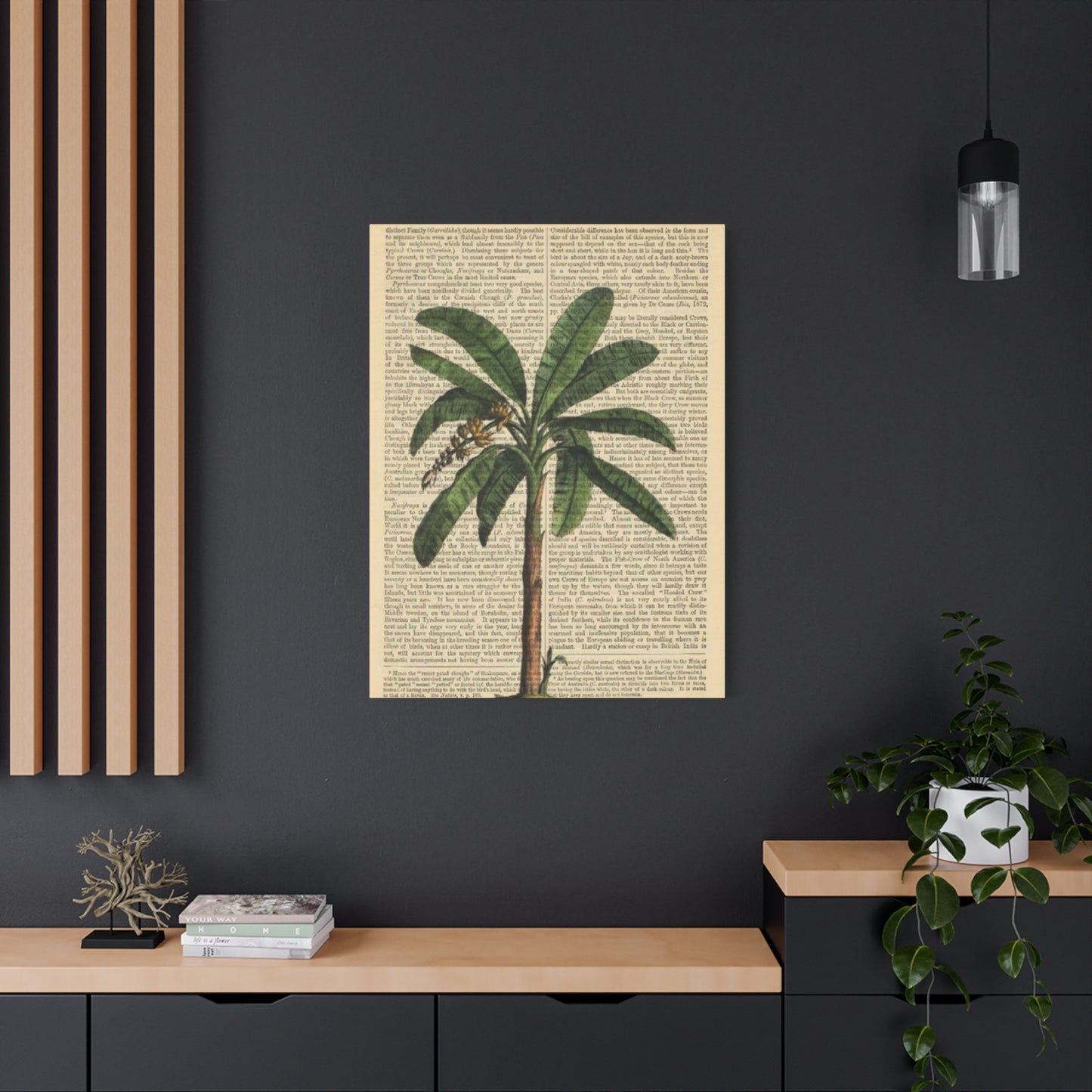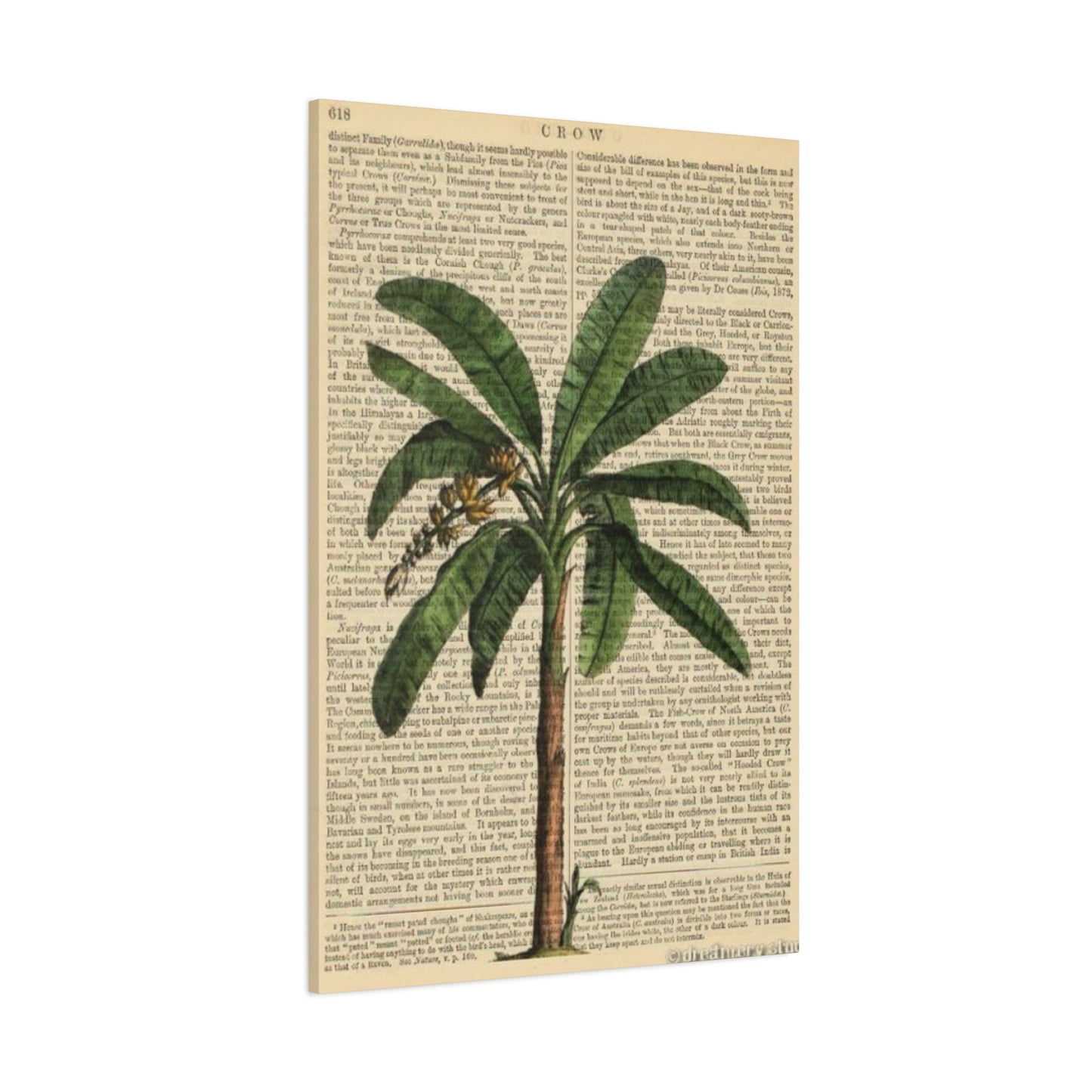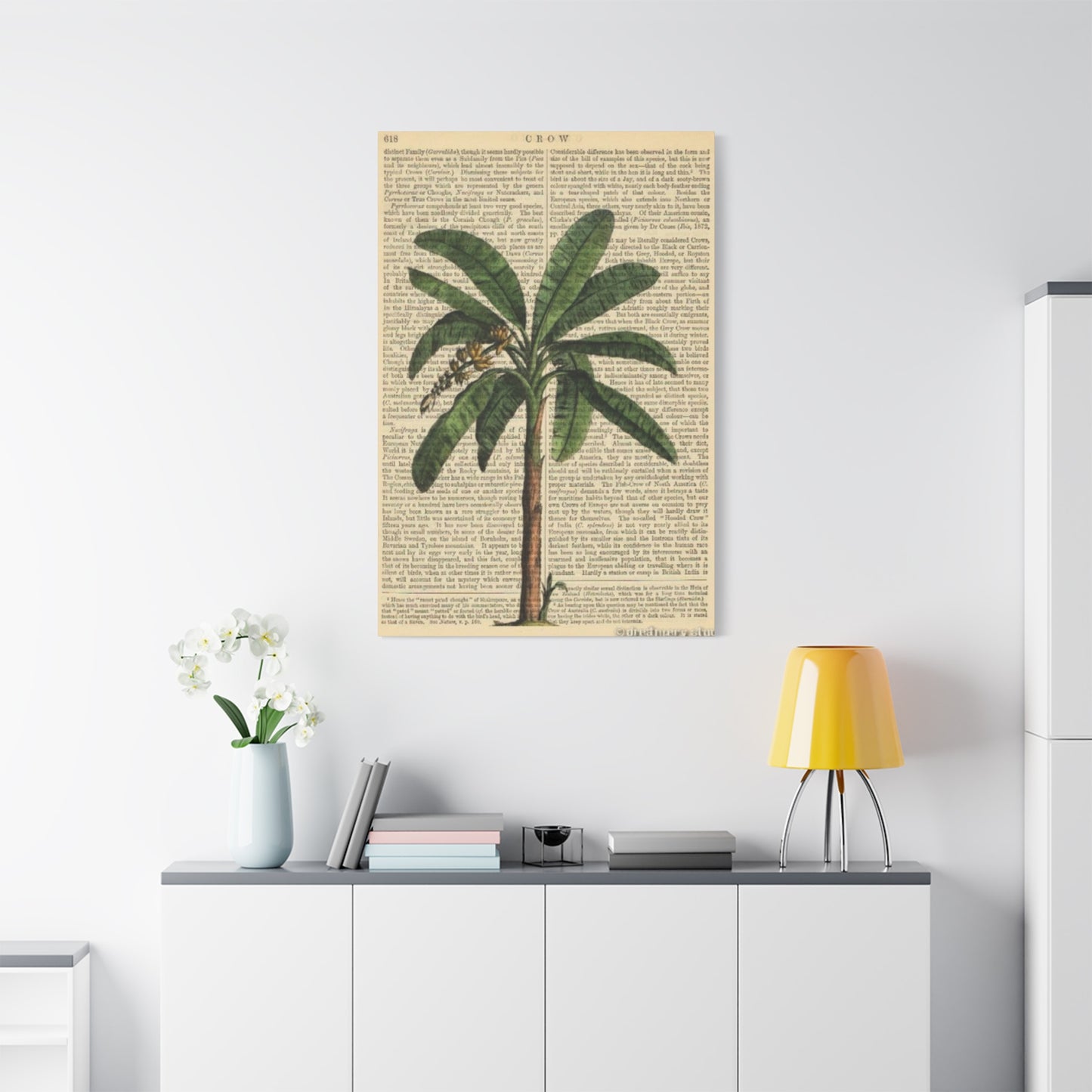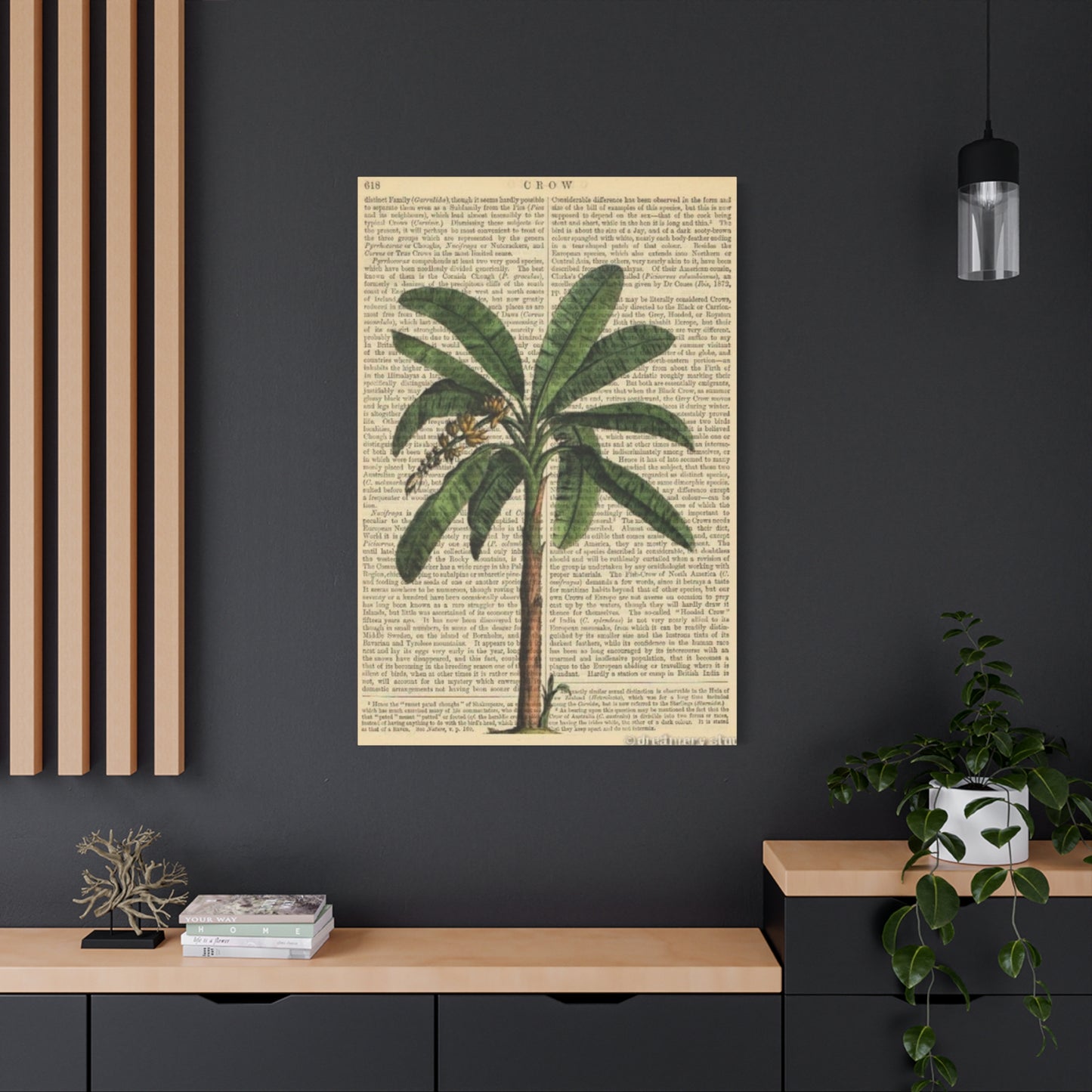Timeless Tropical Elegance: Creative Ways to Style Palm Tree Painting on Vintage Paper Wall Art
Bringing the essence of tropical paradise into your living space has never been more stylish than with vintage-inspired palm tree wall art. These captivating pieces combine the natural beauty of exotic foliage with the nostalgic charm of aged paper and classic design elements. Whether you're creating a coastal retreat, adding bohemian flair, or simply seeking to infuse your home with natural elegance, palm tree artwork on weathered backgrounds offers endless decorating possibilities. This comprehensive guide explores creative approaches to incorporating these stunning botanical pieces into every room of your home, from selecting the perfect prints to arranging them for maximum visual impact.
The appeal of palm tree imagery goes beyond simple decoration. These iconic symbols of paradise evoke feelings of relaxation, wanderlust, and connection to nature. When presented on vintage paper or with antiqued finishes, they gain an additional layer of sophistication and character. The combination creates a perfect balance between tropical vibrancy and refined elegance, making these pieces versatile enough to complement various design aesthetics from coastal casual to sophisticated traditional.
Throughout this exploration, you'll discover practical ideas for incorporating palm tree artwork into different spaces, learn styling techniques that professional designers use, and find inspiration for creating your own unique tropical gallery walls. Whether you're working with a small apartment or a spacious home, these timeless pieces can transform any environment into a serene escape that celebrates both natural beauty and artistic heritage.
Tropical Charm: Palm Tree on Vintage Paper
Creating an atmosphere of tropical charm begins with selecting artwork that captures the graceful beauty of palm trees against the warm, textured backdrop of aged paper. These pieces bring an immediate sense of exotic elegance to any space while maintaining a sophisticated, collected-over-time aesthetic. The vintage paper background adds depth and character that modern prints simply cannot replicate, giving each piece the appearance of a treasured find from an antique market or inherited collection.
The beauty of palm tree artwork on vintage paper lies in its versatility. These pieces work equally well in contemporary spaces seeking a touch of warmth and history or traditional rooms needing a fresh, natural element. The aged paper provides a neutral foundation that allows the palm imagery to take center stage while the weathered appearance prevents the artwork from feeling too bold or overwhelming. This makes them ideal for rooms where you want to add visual interest without dominating the existing color scheme.
When selecting pieces with tropical charm, consider the style of palm tree illustration. Botanical drawings with scientific precision offer a more formal, educational aesthetic reminiscent of museum collections. Silhouette designs create dramatic contrast and work beautifully in modern or minimalist settings. Watercolor renderings on vintage paper backgrounds provide a softer, more romantic interpretation perfect for bedrooms and intimate spaces. Each style brings its own personality while maintaining that essential tropical warmth.
The color palette of vintage paper naturally complements tropical themes. The warm tones of aged cream, soft beige, and golden tan create a sun-bleached effect that enhances the vacation-like atmosphere. These neutral backgrounds allow the green hues of palm fronds to appear more vibrant while keeping the overall look sophisticated rather than overly bright or juvenile. This color harmony makes coordination with existing furniture and textiles much simpler than working with more saturated or contrasting backgrounds.
Placement plays a crucial role in maximizing tropical charm. Position these pieces where they can catch natural light, allowing the texture of the vintage paper to create subtle shadows and highlights throughout the day. Areas near windows, especially those with sheer curtains that filter sunlight, create an ethereal quality that enhances the dreamy, paradise-inspired mood. The play of light across the textured surface adds dimension and makes the artwork feel more dynamic and alive.
Classic Palm Art for Timeless Interiors
Achieving a timeless interior design requires selecting elements that transcend fleeting trends, and classic palm art perfectly fulfills this criterion. These botanical representations have graced sophisticated spaces for centuries, from colonial-era plantation homes to elegant Victorian parlors, proving their enduring appeal across diverse historical periods. When rendered on aged paper with traditional illustration techniques, palm tree artwork gains an heirloom quality that suggests permanence and refined taste.
The timeless nature of palm art stems from its connection to both natural history and artistic tradition. Botanical illustrations have long served scientific and educational purposes, documenting plant species with meticulous accuracy. This scholarly heritage lends gravitas to palm tree artwork, elevating it beyond mere decoration to something culturally and intellectually significant. Displaying such pieces demonstrates an appreciation for both nature and art history, marking the homeowner as someone with cultivated tastes.
Classic palm art works beautifully in traditionally styled interiors featuring rich wood tones, upholstered furniture, and formal arrangements. The organic curves of palm fronds provide a pleasing contrast to the straight lines and geometric patterns often found in traditional design. This juxtaposition prevents traditional spaces from feeling too rigid or stuffy, introducing a breath of natural ease while maintaining overall sophistication. The aged paper background harmonizes with the warm wood finishes and classic color palettes typical of traditional interiors.
Transitional spaces benefit enormously from classic palm art, serving as a bridge between traditional and contemporary elements. These pieces provide enough historical character to satisfy traditional sensibilities while their graphic nature and natural subject matter appeal to more modern tastes. This versatility makes them ideal for homes in transition or those seeking a balanced aesthetic that feels neither too contemporary nor excessively traditional. They create common ground where different design languages can coexist harmoniously.
Symmetrical arrangements of classic palm art reinforce traditional design principles while showcasing the botanical beauty of the subject matter. Flanking a fireplace mantel with matching or complementary palm prints creates formal balance that anchors the space. Similarly, positioning identical palm artworks on either side of a doorway or major furniture piece establishes visual rhythm and order. These symmetrical compositions feel intentional and polished, characteristics highly valued in classic interior design approaches.
The educational aspect of classic botanical palm art adds intellectual depth to interiors. Many vintage-style prints include Latin nomenclature, anatomical details, or regional origin information presented in elegant typography. These scholarly details transform the artwork into conversation pieces that engage viewers beyond simple visual appreciation. Guests may find themselves drawn to examine the illustrations more closely, discovering new details and learning about palm species they might not have previously known existed.
Rustic Decor: Vintage Palm Paintings
Rustic design celebrates natural materials, weathered textures, and unpretentious charm, making vintage palm paintings an unexpected but brilliant addition to this aesthetic. The combination of tropical subject matter with aged, distressed finishes creates a unique fusion that brings warmth and worldly character to rustic spaces. These pieces suggest travels to exotic locations while maintaining the grounded, earthy quality essential to rustic design philosophy.
The weathered appearance of vintage palm paintings aligns perfectly with rustic design principles that embrace imperfection and age. Paint with intentional cracking, fading, or distressing mirrors the worn patina found on reclaimed wood furniture and architectural elements typical in rustic interiors. This visual consistency creates cohesion throughout the space, with the artwork feeling like an organic extension of the overall design rather than a contrasting element. The aged quality suggests history and stories, core values in rustic aesthetic philosophy.
Wooden frames enhance the rustic appeal of vintage palm paintings, particularly those crafted from reclaimed lumber or finished with distressed techniques. Barnwood frames with their natural variations, knots, and weathering create an ideal border that complements both the tropical subject and rustic setting. Similarly, frames painted in chalky whites or soft grays with deliberate wear marks contribute to the collected-over-time appearance. The frame becomes an integral part of the artwork's story rather than simply a boundary.
Rustic cabin and cottage settings gain unexpected sophistication through vintage palm paintings. These spaces often risk feeling too theme-driven or one-dimensional when relying exclusively on traditional rustic imagery like wildlife or mountain scenes. Palm tree artwork introduces an element of surprise and worldliness that elevates the space beyond predictable cabin decor. This unexpected combination demonstrates confident design choices and prevents the space from becoming a cliché.
The tropical subject matter provides welcome contrast to the heavy, dark elements often present in rustic spaces. Exposed beams, stone fireplaces, and substantial wooden furniture can make rooms feel dark or cave-like without appropriate lighting and visual relief. Palm paintings introduce organic shapes and often lighter tones that brighten the space while maintaining rustic character. The upward growth pattern of palms draws the eye upward, creating a sense of height that counteracts the grounding heaviness of rustic materials.
Farmhouse rustic styles particularly benefit from vintage palm paintings as they introduce global influences to what can otherwise feel provincial. Modern farmhouse design increasingly incorporates worldly elements that suggest well-traveled homeowners with broad interests. Palm artwork serves this purpose beautifully, bringing exotic locations into the farmhouse context without disrupting the fundamental aesthetic. The juxtaposition feels fresh and current while respecting traditional farmhouse values of simplicity and connection to nature.
Textural contrast between smooth painted surfaces and rough rustic materials creates visual interest that engages the eye. When placed against shiplap walls, exposed brick, or natural stone, the relatively smooth surface of palm paintings provides relief and variation. This textural diversity prevents rustic spaces from becoming monotonous while maintaining material authenticity. The contrast highlights both the tactile quality of rustic materials and the artistic craftsmanship of the paintings.
Entryway Accent: Palm Tree Canvas
First impressions matter enormously in home design, and the entryway serves as the opening statement that sets expectations for the entire home. A carefully selected palm tree canvas in this transitional space immediately establishes a welcoming, sophisticated atmosphere that suggests both style and relaxation. This placement transforms a typically overlooked area into a memorable introduction that guests remember and homeowners enjoy every time they return home.
The entryway presents unique design challenges with its functional demands and transitional nature. Artwork here must make an immediate impact while not overwhelming the typically compact space. A single substantial palm tree canvas achieves this balance perfectly, providing a clear focal point without cluttering the limited wall space. The vertical orientation of most palm tree compositions naturally suits the often narrow wall spaces found in entryways, making efficient use of available area.
Palm tree canvas artwork in entryways establishes the home's design personality from the first moment. Guests immediately understand that the homeowner values natural beauty, appreciates art, and likely embraces a relaxed yet refined lifestyle. This immediate communication sets a comfortable tone that makes visitors feel welcome and puts them at ease. The tropical reference suggests hospitality and warmth, inviting people to leave the outside world behind and enter a space of comfort.
Lighting considerations in entryways significantly affect how palm tree canvas artwork appears. Many entry spaces lack natural light, relying instead on artificial lighting that can be carefully controlled to showcase the artwork. Installing a picture light above or positioning recessed lighting to highlight the canvas ensures the artwork remains visible and impactful even during evening hours. This illumination also serves a practical function, making the entry space feel brighter and more inviting.
Minimalist Vintage Palm Wall Prints
Minimalist design philosophy emphasizes simplicity, clean lines, and intentional use of space, making artwork selection critically important. Every piece must earn its place through both aesthetic merit and meaningful contribution to the space. Vintage palm wall prints satisfy these demanding criteria by offering visual interest without clutter, natural beauty without excess, and character without chaos. Their simplicity of subject matter and composition makes them ideal companions to minimalist interiors.
The linear quality of palm fronds aligns beautifully with minimalist design principles. The clean lines of palm leaves create graphic interest without the visual complexity of more elaborate botanical subjects. These simple forms provide enough visual engagement to prevent minimalist spaces from feeling stark or cold while maintaining the uncluttered aesthetic essential to the style. The organic curves introduce just enough variation to create interest without disrupting the overall sense of calm and order.
Monochromatic or limited color palette prints work exceptionally well in minimalist settings. Black and white palm prints offer maximum contrast and graphic impact while maintaining color restraint. Sepia-toned images on vintage paper provide warmth without introducing multiple competing hues. These restrained color choices ensure the artwork enhances rather than overwhelms minimalist spaces where every color decision carries significant weight in the overall composition.
Negative space in minimalist vintage palm prints serves as an active design element rather than empty background. The unmarked areas of vintage paper surrounding the palm imagery give the eyes places to rest while emphasizing the beauty of the palm form itself. This embrace of emptiness aligns perfectly with minimalist philosophy that values what isn't present as much as what is. The breathing room around the subject prevents the composition from feeling busy or cluttered.
Single large-scale palm prints make stronger minimalist statements than collections of smaller pieces. One substantial artwork above a sofa or bed provides the necessary visual interest without introducing the complexity of arranging multiple pieces. This singular focus creates a clear focal point that draws attention without demanding it, allowing the artwork to serve its purpose while the space maintains its overall simplicity. The impact comes from quality and presence rather than quantity.
Simple framing or no frame at all suits minimalist vintage palm prints perfectly. Thin black metal frames provide definition without visual weight, disappearing into the background while protecting the artwork. Floating the print on a slightly larger backing board creates dimension without ornate framing. Some minimalist spaces benefit from frameless prints mounted directly to the wall or sandwiched between plexiglass panels, allowing the vintage paper itself to become the focus without distraction.
Antique Vibes: Palm Tree Wall Decor
Capturing authentic antique vibes requires more than simply hanging old artwork on walls. It demands an understanding of historical aesthetics, aging processes, and the subtle details that distinguish genuinely aged pieces from modern reproductions. Palm tree wall decor with true antique character brings historical depth to interiors, connecting contemporary spaces to the past through carefully preserved or expertly replicated botanical imagery that speaks to earlier eras of exploration and documentation.
The patina of age distinguishes authentic antique vibes from merely old-looking decoration. Genuine vintage paper develops specific aging characteristics including foxing, subtle discoloration variations, and slight brittleness that modern printing cannot fully replicate. When selecting palm tree decor for authentic antique appeal, seek pieces demonstrating these natural aging signs. The imperfections tell stories of time passed and environments experienced, adding layers of interest beyond the illustrated subject matter itself.
Historical illustration techniques visible in antique palm tree decor reveal the craftsmanship of earlier printing methods. Lithography, engraving, and hand-coloring each produce distinctive visual characteristics different from contemporary printing. Understanding these historical processes helps identify truly antique pieces and high-quality reproductions that respect original techniques. The slightly uneven ink distribution, subtle plate marks, or watercolor variations that characterize these methods contribute enormously to the authentic antique appearance.
Decorating with antique palm tree pieces requires consideration of historical context and appropriate companions. These pieces feel most at home surrounded by other elements reflecting similar time periods or complementary aesthetics. Antique furniture, vintage textiles, and traditional decorative objects create a cohesive environment where palm tree wall decor appears as a natural component rather than an isolated element. This contextual placement enhances the authentic antique atmosphere throughout the space.
Conservation framing protects genuinely antique palm tree decor while showcasing its aged beauty. Acid-free matting prevents further deterioration while UV-protective glass shields fragile paper from light damage. Conservation techniques ensure these pieces survive for future generations while remaining on display. Even with reproductions, using conservation materials maintains the appearance of treating the artwork with the respect due to genuine antiques, reinforcing the overall aesthetic commitment.
The educational and scientific origins of many antique palm tree illustrations add intellectual substance to their decorative appeal. Victorian-era botanical prints served serious documentation purposes, recording species encountered during explorations of tropical regions. Displaying these pieces acknowledges the historical importance of botanical illustration while appreciating the artistry involved. This dual significance makes them more than mere decoration, transforming them into historical artifacts worthy of preservation and display.
Affordable Vintage Palm Art Prints
Creating beautiful, vintage-inspired spaces need not require enormous financial investment. The market for affordable vintage palm art prints has expanded dramatically, making these desirable decorative elements accessible to budget-conscious decorators. Whether choosing digital prints of botanical illustrations, purchasing mass-produced reproductions on aged paper, or even creating custom pieces, achieving the sophisticated look of vintage palm art remains within reach for various financial situations without sacrificing style.
Digital printing technology has revolutionized access to affordable vintage palm art. Museums and botanical institutions have digitized their historical collections, making high-resolution images of genuine antique illustrations available for download and printing. Many of these institutions offer free digital files for personal use, allowing crafty decorators to print their own vintage palm art on specialty papers. This approach delivers authentic historical imagery at minimal cost, democratizing access to designs once available only to wealthy collectors.
Print-on-demand services offer another affordable avenue for acquiring vintage palm art. These companies maintain extensive libraries of botanical illustrations that can be printed individually in various sizes and on different substrates including paper, canvas, and even metal. Ordering only what you need eliminates waste while keeping costs reasonable. The quality has improved dramatically in recent years, with many services offering archival inks and papers that ensure longevity comparable to much more expensive alternatives.
Thrift stores, garage sales, and secondhand shops occasionally yield surprising vintage palm art treasures at remarkably low prices. The key is developing a discerning eye and patience to search through less promising items. These venues sometimes offer genuine vintage pieces that sellers have undervalued or reproduction prints that others have discarded. The thrill of discovery adds enjoyment to the decorating process while keeping costs minimal, transforming budget constraint into treasure hunting adventure.
Creating DIY vintage palm art provides ultimate affordability while offering customization impossible with purchased pieces. Download or scan palm tree illustrations and use image editing software to adjust colors, add vintage effects, and create custom compositions. Print on specialty papers treated to appear aged or artificially age standard paper using tea staining, gentle distressing, or other techniques. Frame with thrifted frames refinished to coordinate with your decor. The resulting pieces cost pennies compared to purchased alternatives while being completely unique.
Layered Decor with Palm Tree Paintings
Sophisticated interior design rarely relies on single isolated elements but instead builds visual interest through thoughtful layering of textures, colors, and decorative objects. Palm tree paintings serve as excellent foundation pieces for layered decor schemes, providing starting points around which designers can build dimensional, engaging vignettes. The key to successful layering involves understanding scale relationships, balancing visual weight, and creating depth that draws viewers into the composition rather than overwhelming them.
Beginning with palm tree paintings as anchor pieces establishes the theme and color palette for layered arrangements. The artwork provides both literal and figurative background against which other elements can be displayed. This foundational role makes artwork selection critically important since everything layered in front should relate to and enhance the painting rather than competing with it. Consider the colors, style, and mood of the palm tree painting when selecting complementary layering elements.
Physical layering in front of palm tree paintings creates dimensional interest that engages viewers. Small shelves mounted below the artwork can display collected objects, small plants, or decorative items that relate to the tropical theme. Alternatively, lean smaller framed pieces against the wall in front of the painting on a console table or shelf, creating a casual collected appearance. This overlapping arrangement adds depth while allowing flexibility to rearrange elements easily without permanent installation.
Textural contrast enhances layered compositions around palm tree paintings. Smooth painted or printed surfaces benefit from proximity to rough natural materials like woven baskets, rattan accessories, or raw wood elements. Incorporating textiles such as throws with interesting weaves or pillows with tactile fabrics adds another dimension of sensory interest. These textural variations prevent the space from becoming visually flat while maintaining cohesive tropical aesthetic through careful material selection.
Color layering builds complexity and sophistication in displays featuring palm tree paintings. Begin with the painting's dominant colors and introduce them in varying shades and intensities throughout the layered elements. If the painting features deep green palm fronds on cream paper, layer in sage green accessories, olive textiles, and cream ceramics. This color repetition creates unity while slight variations add interest. Introducing metallic accents in brass or gold warms the palette and references historical tropical travel.
Scale variation in layered arrangements prevents monotony and creates visual rhythm. Combine the larger palm tree painting with substantially smaller elements, medium-sized decorative objects, and perhaps one larger piece that doesn't compete with the artwork but provides secondary interest. This variety in scale creates movement as the eye travels from larger to smaller elements, exploring the entire composition rather than fixating on a single piece. The size contrast also emphasizes the painting's significance as the arrangement's focal point.
Botanical elements strengthen the natural theme of palm tree paintings when incorporated into layered displays. Living plants, particularly tropical varieties with bold leaves, create connection between artistic representation and living nature. Dried botanicals including palm fronds, pampas grass, or preserved leaves reference the artwork while adding organic texture. Even simple stems in bottles or vases scattered among other decorative objects reinforce the natural aesthetic without overwhelming the space.
Coastal Vintage Wall Art Inspiration
Coastal design naturally embraces vintage palm tree wall art, as both celebrate connection to nature, relaxed living, and vacation-inspired aesthetics. The marriage of coastal elements with tropical imagery creates sophisticated spaces that feel simultaneously elegant and casual, polished yet comfortable. Drawing inspiration from seaside locations worldwide helps inform authentic coastal vintage displays that capture the essence of beachside living regardless of actual proximity to oceans.
The color palette connecting coastal and vintage palm art typically features sand tones, soft blues, weathered grays, and natural whites. These colors appear both in classic coastal interiors and as backgrounds in vintage palm illustrations printed on aged paper. This natural harmony makes coordination effortless, allowing vintage palm art to integrate seamlessly into coastal spaces. The muted tones prevent the tropical element from feeling out of place or too vibrant for the subtle sophistication of refined coastal design.
Weathered wood frames around vintage palm art reinforce coastal aesthetic while protecting the artwork. Choose frames that appear naturally aged by sun and salt air, with silvered gray finishes or bleached white paint showing wear. These frames mirror the driftwood and weathered architectural elements found in authentic coastal homes, creating material consistency throughout the space. The worn appearance also complements the aged quality of vintage paper, ensuring frame and artwork feel unified rather than mismatched.
Gallery walls combining vintage palm art with coastal photography create narrative interest that tells beach vacation stories. Intersperse palm tree prints with images of seashells, coastal landscapes, vintage beach scenes, or nautical subjects. The combination suggests travels to tropical coastal destinations, building a visual travel journal on the wall. Vary frame styles and sizes within a cohesive color family to create casual, collected appearance rather than rigid uniformity that feels too formal for coastal spaces.
Collected shells, coral, and beach findings displayed near vintage palm art create tangible connections between artwork and natural world. Glass jars filled with sand and shells, coral specimens on stands, or sea glass collections in bowls bring literal pieces of coastal environments indoors. These natural objects validate the coastal tropical theme established by palm art while adding organic shapes and textures. The collections suggest beachcombing walks and intimate connection with coastal ecosystems.
Color accents in coastal spaces featuring vintage palm art should remain subtle and ocean-inspired. Soft aqua, muted turquoise, sandy beige, and weathered blue work harmoniously with both coastal design and vintage palm imagery. These colors can appear in throw pillows, ceramic accessories, or textile accents without overwhelming the serene neutral foundation. The restraint prevents spaces from becoming overly thematic while maintaining clear coastal identity that honors the vintage palm art as central decorative element.
DIY Vintage Paper Palm Art
Creating your own vintage paper palm art offers creative satisfaction while allowing complete customization impossible with purchased pieces. This hands-on approach enables perfect size selection, personalized color treatments, and unique compositions that reflect individual taste. The process also provides deeper appreciation for the craftsmanship involved in original botanical illustrations while delivering affordable artwork that appears far more expensive than its actual cost. With basic materials and techniques, anyone can produce museum-quality vintage palm art.
Sourcing appropriate palm tree illustrations begins the DIY process. Public domain botanical illustrations available from museum databases, botanical garden archives, and digital libraries provide authentic starting material. Websites like Biodiversity Heritage Library, Internet Archive, and various national museum collections offer high-resolution scans of historical palm illustrations perfect for reproduction. Ensure images are sufficient resolution for intended print size, generally at least 300 DPI at final dimensions for professional-looking results.
Aging techniques transform modern prints into convincing vintage pieces. Tea staining creates beautiful aged paper effects by steeping strong tea and either brushing it onto paper or briefly soaking prints in shallow pans. Coffee produces similar effects with slightly darker tones. For more dramatic aging, carefully singe paper edges with flames or use sandpaper to create worn areas. Crumpling paper before printing or treating creates subtle texture resembling antique documents. Experiment with combinations of techniques to achieve desired vintage appearance.
Paper selection significantly impacts final results of DIY vintage palm art. Heavier weight papers between 80-110 pounds provide substantial feel comparable to historical botanical prints. Slightly textured or cotton-based papers accept aging treatments better than smooth glossy papers while appearing more authentic. Cream or off-white papers require less dramatic aging treatments than bright white papers. Specialty art supply stores stock various papers suitable for creating convincing vintage effects through home printing methods.
Printing methods affect both appearance and longevity of DIY vintage palm art. Home inkjet printers using archival inks produce results lasting many years without significant fading when protected from direct sunlight. Laser printers create crisp lines but may not render subtle color gradations as beautifully as inkjets. For highest quality results, professional printing services using archival processes deliver superior color accuracy and longevity. Consider cost-benefit analysis based on how prominently artwork will be displayed and expected lifespan needs.
Elegant Palm Wall Art for Homes
Elegance in home decoration transcends mere visual appeal, encompassing qualities of refinement, sophistication, and timeless beauty that elevate ordinary spaces into extraordinary environments. Palm wall art contributes to elegant interiors through graceful natural forms, sophisticated subject matter, and versatile styling that adapts to various elegant design approaches. The key lies in selecting and presenting palm artwork with attention to quality, scale, and context that honors both the art itself and the elegant spaces it inhabits.
The inherent grace of palm tree forms makes them naturally suited to elegant presentations. The sweeping curves of palm fronds create flowing lines that lead the eye upward with lyrical movement. This organic elegance prevents spaces from feeling too rigid or formal while maintaining sophisticated character. The botanical subject matter provides intellectual substance beyond simple decoration, suggesting cultured appreciation for natural science and artistic documentation that characterizes truly elegant homes.
Scale consideration proves critical when selecting palm wall art for elegant spaces. Larger rooms with high ceilings demand appropriately substantial artwork that commands attention without appearing lost on expansive walls. Conversely, intimate spaces require more modest pieces that provide elegance through restraint rather than grandeur. The artwork should relate proportionally to both the wall space and surrounding furniture, creating harmonious relationships that feel intentional and balanced rather than arbitrary or forced.
Color sophistication in elegant palm wall art typically favors subtle palettes over bold hues. Muted greens, soft grays, sepia tones, and cream backgrounds create refined elegance that won't overwhelm carefully composed color schemes. These restrained palettes allow elegant furnishings, textiles, and architectural details to shine while the artwork provides supporting beauty rather than dominating the space. Monochromatic palm art in particular delivers maximum elegance through graphic simplicity and tonal sophistication.
Framing choices dramatically influence whether palm wall art appears elegant or merely decorative. High-quality frames with fine details such as subtle carved elements or beautiful wood grain elevate artwork significantly. Gold or silver gilt frames add traditional elegance particularly suited to formal spaces, while sleek metal frames in brass, bronze, or matte black deliver contemporary elegance. The frame should enhance artwork without overwhelming it, serving as elegant border that completes rather than competes with the palm imagery.
Symmetrical arrangements of palm wall art reinforce classical elegance principles that have guided refined interiors for centuries. Flanking a fireplace, doorway, or centered furniture piece with matching or complementary palm prints creates formal balance associated with elegant design. This symmetry demonstrates intentional design thinking and creates calm, ordered environments where elegance flourishes. Even in more casually elegant spaces, subtle symmetry in artwork placement contributes to overall sense of refinement.
Boho Vibes: Palm Tree Prints
Bohemian design celebrates creative freedom, global influences, and eclectic mixing that defies conventional decorating rules. Palm tree prints fit naturally into boho spaces through their connection to exotic locations, organic forms, and versatile styling possibilities. The key to achieving authentic boho vibes with palm art involves embracing imperfection, layering with abandon, and mixing styles fearlessly to create highly personalized spaces that reflect individual creativity and worldly experiences.
The free-spirited nature of bohemian design welcomes palm tree prints in various conditions and styles. Slightly damaged vintage prints with tears, stains, or fading contribute to boho authenticity rather than detracting from it. These imperfections tell stories and suggest treasured finds from flea markets or travels, core narratives in bohemian decorating philosophy. Rather than seeking perfect gallery-quality pieces, boho decorators embrace character and history that comes with genuine age and use.
Mixing palm tree prints with diverse artistic styles creates eclectic boho galleries that feel collected over time. Combine vintage botanical palm illustrations with macramé wall hangings, woven textiles, ethnic prints, and contemporary photography. This fearless mixing represents bohemian confidence and creative vision that transcends matching sets. The common thread connecting disparate elements might be simply personal meaning rather than visual similarity, creating galleries that function as visual autobiographies.
Color maximalism often characterizes bohemian spaces, and palm tree prints can either provide or complement bold color schemes. Vintage palm prints on aged paper contribute warm neutral tones that ground more vibrant elements. Alternatively, hand-colored palm prints with jewel tones or sun-faded tropical hues add color while maintaining natural theme. Layering colorful textiles, pillows, and accessories around palm prints creates the rich, saturated environments typical of bohemian design at its most exuberant.
Unconventional framing or no framing at all suits bohemian palm tree print display. Attach prints directly to walls using decorative clips, washi tape, or small nails for casual presentation that can be easily rearranged. Layer unframed prints on shelves leaning against walls with other objects in front. Use mismatched vintage frames in various styles and finishes to create intentionally eclectic presentation. This relaxed approach to framing embodies bohemian rejection of formality and rules.
Global influences inherent in bohemian style make palm tree prints particularly appropriate as they reference tropical locations worldwide. Display palm prints alongside treasures from travels or ethnic markets including textiles, baskets, pottery, and artifacts. This combination suggests worldly experiences and appreciation for diverse cultures, fundamental values in bohemian philosophy. The palm imagery serves as bridge between different geographic and cultural elements, unified by connection to tropical and subtropical regions globally.
Layering palm tree prints with plants creates lush, jungle-like environments that epitomize boho natural aesthetic. Hang prints among climbing pothos vines, position them behind fiddle leaf figs or monstera plants, or create shelving arrangements where living and illustrated plants intermingle. This integration of art and nature blurs boundaries between decoration and living ecosystem, a goal many bohemian decorators actively pursue. The result feels organic and alive rather than staged or static.
Textural abundance surrounding palm tree prints enhances bohemian sensory richness. Incorporate macramé, woven wall hangings, velvet pillows, silk scarves, leather poufs, and rough-hewn wood. These varied textures create tactile interest that invites touch and creates cozy, inviting environments. The smooth surface of palm prints provides contrast that makes the surrounding textures more noticeable while the organic palm imagery harmonizes with natural materials common in bohemian textural palettes.
Bedroom Oasis with Vintage Palm Art
Transforming bedrooms into personal oases requires creating environments that promote rest, relaxation, and mental escape from daily stresses. Vintage palm art contributes significantly to this transformation through calming natural imagery, vacation-inspired aesthetics, and sophisticated beauty that enhances rather than stimulates. The bedroom oasis functions as private retreat where thoughtfully selected palm artwork supports the space's primary purposes while reflecting personal style and aspirations.
The calming psychological effects of palm tree imagery make it particularly suited to bedroom environments. Research suggests that viewing natural scenes reduces stress and promotes relaxation, effects crucial for spaces dedicated to rest. Palm trees specifically evoke vacation mindsets and tropical calm, helping minds transition from work mode to rest mode. This mental shift supports better sleep quality and creates morning awakenings that feel more refreshed and positive, starting days from place of calm rather than stress.
Placement above the bed creates natural focal point while ensuring the artwork is visible from both lying and sitting positions. This positioning allows enjoying the art before sleep and upon waking, bookending each day with calming natural beauty. The artwork should be securely mounted to prevent any safety concerns and positioned at appropriate height that feels integrated with the bed rather than floating awkwardly above it. Generally, the bottom of artwork should sit approximately 6-10 inches above headboard or mattress if no headboard exists.
Color coordination between vintage palm art and bedroom textiles creates cohesive, calming environments. Pull accent colors from the artwork into bedding, throw pillows, and window treatments for unified appearance. If the palm print features cream paper and green fronds, incorporate these tones into the room through sage green linens, cream duvet covers, and natural wood furniture. This color repetition creates visual harmony that feels intentional and sophisticated rather than randomly assembled.
Scale appropriateness ensures bedroom palm art makes proper impact without overwhelming intimate spaces. Bedrooms typically benefit from moderate-sized artwork that provides sufficient presence without dominating. A piece roughly two-thirds the width of the bed works well above the headboard, creating balance between artwork and furniture. Smaller bedrooms might instead feature palm art on walls adjacent to the bed, preventing any feelings of the ceiling appearing lower or the space feeling compressed by overly large artwork.
Layering bedroom lighting creates ambiance that highlights palm art while supporting various activities. Reading lights beside the bed provide task illumination while table lamps on dressers add ambient glow. Consider adding picture lighting specifically for the palm artwork, allowing it to remain visible and beautiful even when other lights are dimmed for evening relaxation. This layered approach ensures the artwork contributes to room atmosphere at all times rather than disappearing into darkness at night.
Pairing vintage palm art with natural materials reinforces the organic, oasis-like quality of bedroom retreats. Linen bedding, cotton textiles, wooden furniture, and woven accessories create sensory experiences that complement the natural palm imagery. These materials also regulate temperature better than synthetics, contributing to physical comfort that complements the mental relaxation inspired by the artwork. The natural material palette creates cohesive story about connection to nature and organic living.
Living Room Vintage Palm Canvas
Living rooms serve as primary gathering spaces where families relax and guests are entertained, making artwork selection particularly important. Vintage palm canvas pieces in these high-traffic, highly visible spaces must balance personal expression with broad appeal, creating welcoming environments that feel both stylish and comfortable. The durability and presence of canvas makes it ideal for living room applications where artwork faces more viewing and potential environmental exposure than in private spaces.
Canvas texture adds dimensional interest that flat paper prints cannot provide. The woven surface creates subtle shadows and highlights that change with viewing angles and lighting conditions throughout the day. This textural quality makes canvas palm art feel more substantial and artistic, suggesting serious art collection rather than simple decoration. The texture also contributes to casual elegance appropriate for living spaces meant to be comfortable rather than museum-formal.
Sizing living room palm canvas requires considering both the wall space and seating arrangements. Above sofas, artwork should span roughly two-thirds to three-quarters of the furniture width for proper proportion. On large empty walls, substantial pieces or groupings prevent artwork from appearing lost in the space. Consider sight lines from various seating positions to ensure the artwork is visible and properly appreciated from where people actually sit rather than only from standing positions.
Gallery-wrapped canvas eliminates framing needs while creating contemporary presentation suited to modern and transitional living rooms. The printed or painted surface wraps around the stretcher bars to the back, creating finished edges that require no additional framing. This approach saves money while delivering clean, gallery-style presentation. For vintage aesthetic, ensure the wrap design maintains the aged paper appearance around edges or uses neutral colors that don't interrupt the vintage character of the front image.
Creating conversation areas around vintage palm canvas establishes the artwork as central to the room's identity. Arrange seating to face or partially face the artwork, inviting contemplation and discussion. This positioning transforms the canvas from background decoration to active participant in room experience. Guests naturally comment on striking artwork positioned prominently, providing conversation starters that break ice and create connections between people through shared appreciation of beauty.
Coordinating living room color schemes with vintage palm canvas creates cohesive environments that feel intentionally designed. Pull accent colors from the artwork into throw pillows, area rugs, and decorative accessories for unified appearance. If the canvas features warm cream backgrounds and green palm fronds, incorporate these tones throughout the space in various shades and intensities. This color repetition creates sophisticated visual flow that demonstrates design confidence and skill.
Balancing vintage palm canvas with modern furniture creates interesting tension between old and new that defines transitional style. The aged aesthetic of vintage palm imagery provides historical character while contemporary sofas, clean-lined coffee tables, and modern lighting keep the space current. This juxtaposition prevents living rooms from feeling dated or overly theme-driven while allowing personality through the vintage artwork. The result appeals to diverse tastes and ages, important consideration in family gathering spaces.
Travel-Inspired Palm Tree Wall Decor
Travel experiences shape perspectives and create cherished memories that people naturally want to incorporate into daily living environments. Palm tree wall decor serves as perfect vehicle for expressing wanderlust and celebrating destinations visited or dreamed about. These pieces transform homes into personal museums of travel memories while inspiring future adventures. The key lies in selecting and displaying palm artwork that tells authentic travel stories rather than generic tropical decoration.
Collecting palm tree artwork from actual travels creates deeply personal decor with genuine stories. Purchase botanical prints at local markets in tropical destinations, commission artwork from regional artists, or photograph palm trees personally and have images printed on vintage-textured paper. These pieces carry authentic connections to specific places and experiences, making them infinitely more meaningful than mass-produced alternatives. The stories behind acquisition become part of the artwork's value and interest.
Creating travel gallery walls combines palm tree artwork with photography, maps, and memorabilia from tropical destinations. Mix vintage palm prints with personal vacation photos, vintage travel posters, framed maps showing places visited, and even small framed items like postcards or ticket stubs. This eclectic combination creates visual travel journals that document adventures while inspiring future trips. The palm artwork ties together disparate elements through common tropical theme.
Labeling palm tree artwork with locations or species names adds educational element that enhances travel-inspired displays. Small plaques or handwritten labels identifying palm species and their native regions transform simple decoration into informative display. This approach mirrors natural history museum presentations and demonstrates serious interest in botanical subjects beyond superficial decoration. The labels also prompt memories of where specific palm varieties were encountered during travels.
Arranging travel-inspired palm decor chronologically tells visual story of travel history over time. Begin with earliest trips on one side of a gallery wall and progress toward most recent adventures. This timeline approach creates narrative arc that visiting guests can follow while serving as personal reminder of growth through travel experiences. The progression also demonstrates evolving aesthetic preferences as collecting style often develops and refines over time.
Incorporating cultural artifacts from palm-rich regions alongside botanical artwork creates rich, layered displays. Pair palm prints with textiles from Southeast Asia, pottery from Caribbean islands, carvings from Pacific cultures, or metalwork from tropical Latin American countries. These combinations demonstrate appreciation for both natural beauty and cultural richness of tropical regions. The objects provide three-dimensional interest that complements flat artwork while deepening the travel-inspired story.
Color schemes in travel-inspired spaces can either embrace vibrant tropical hues or maintain sophisticated neutrality depending on personal preference and overall home aesthetic. Bold colors like turquoise, coral, and sunny yellow create energetic, celebration-like atmosphere that captures vacation excitement. Alternatively, neutral foundations with natural materials allow collected palm artwork and travel objects to provide color interest without overwhelming. Both approaches authentically represent different aspects of travel experience.
Retro Palm Art on Aged Paper
Retro design captures the aesthetic spirit of past decades, celebrating mid-century modern, vintage commercial art, and nostalgic graphic design that feels both historical and freshly relevant. Retro palm art on aged paper combines these temporal elements into pieces that reference both the distant past of vintage paper aging and the more recent past of retro stylistic periods. This layered historicity creates fascinating artifacts that appeal to multiple design sensibilities simultaneously.
Mid-century modern aesthetics particularly complement retro palm art with their emphasis on organic forms and connection to nature. The clean lines and sculptural quality that defined 1950s and 1960s design pair beautifully with simplified, graphic palm tree representations on aged backgrounds. This combination captures the era's optimism about tropical modern living, referencing the palm-filled courtyards and tropical wallpapers that characterized progressive residential design. The nostalgic aesthetic feels both period-appropriate and currently fashionable as mid-century style experiences renewed popularity.
Graphic simplification in retro palm art creates bold visual impact through reduction rather than elaboration. These pieces often feature palm silhouettes, geometric interpretations, or stylized representations rather than botanically accurate illustrations. The simplification creates recognizable palm forms while allowing graphic strength through shape and composition. This approach suits modern sensibilities valuing clean design while the aged paper provides vintage character preventing the work from feeling too contemporary or sterile.
Color palettes in retro palm art often reference specific decades through characteristic hues. 1950s-inspired pieces might feature soft pastels including mint green, peachy coral, and butter yellow. 1960s and 1970s retro palm art embraces earthier tones like avocado green, harvest gold, and burnt orange. The aged paper background typically remains neutral, allowing these period colors to define the retro character. Selecting colors matching other vintage-inspired elements in the space creates cohesive retro environments.
Typography integration distinguishes retro commercial palm art from purely decorative botanical pieces. Vintage travel posters, advertisements, and promotional materials featuring palm trees included distinctive period typography that contributes significantly to retro appeal. Reproductions or inspired pieces maintaining these type treatments deliver authentic retro character. The combination of palm imagery and vintage lettering creates complete period aesthetic that transports viewers to specific eras of commercial design.
Final Thoughts:
Palm tree painting on vintage paper wall art transcends fleeting design trends, standing as a timeless expression of natural beauty and refined taste. It harmoniously merges the tranquility of tropical landscapes with the nostalgic warmth of aged paper, resulting in artwork that feels both globally inspired and deeply personal. Whether displayed in a bright coastal living room, a serene bedroom retreat, or a tastefully curated study, this form of art introduces a sophisticated sense of calm and effortless elegance.
What makes palm tree vintage wall art truly remarkable is its ability to bridge eras — evoking the golden age of exploration while remaining relevant in contemporary interiors. Its subtle textures, earthy tones, and botanical grace invite viewers to slow down, reflect, and reconnect with nature’s enduring rhythm. Each brushstroke whispers of sunlit shores, gentle breezes, and the timeless dialogue between humanity and the natural world.
In a time when interior design trends shift rapidly, pieces like these offer something more permanent: emotional resonance and historical charm. Choosing palm tree vintage wall art is not merely about decoration — it’s an embrace of heritage, artistry, and timeless tropical sophistication. It becomes a living narrative within your space, celebrating the serene beauty of nature and the poetic passage of time.

















